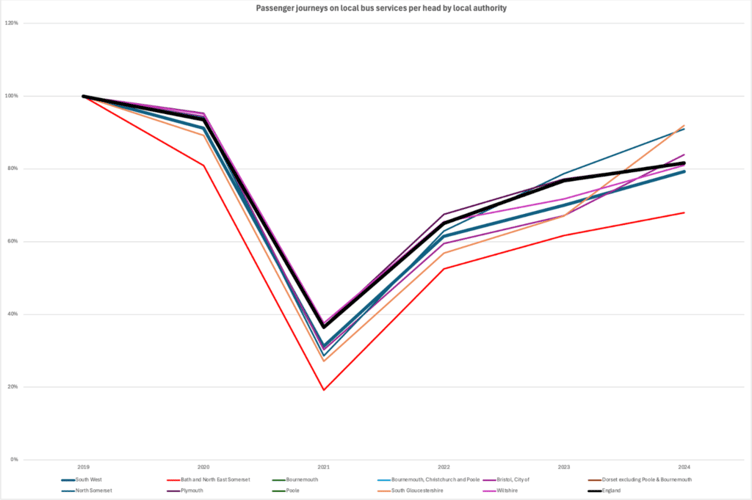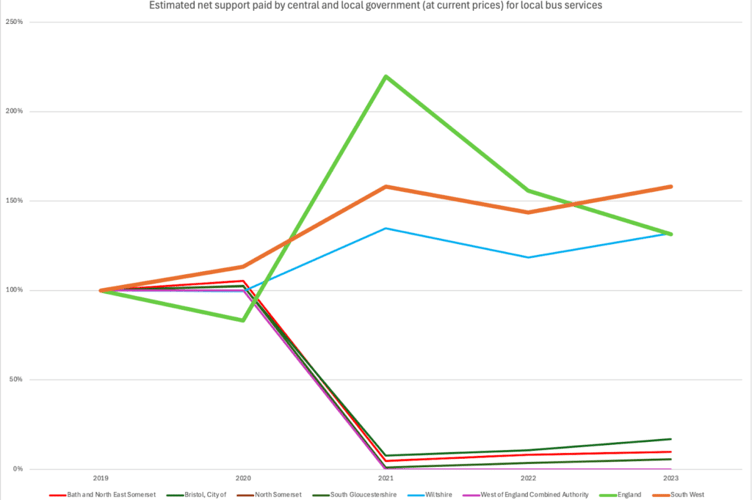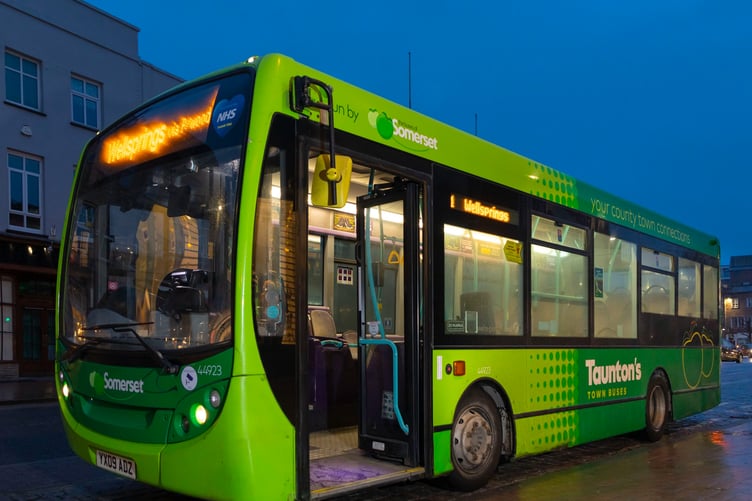The UK government’s latest official bus statistics report has revealed a decline in the number of passengers on services across Bath and North East Somerset.
Despite claims of growth in the use of bus services, Bath and North East Somerset (B&NES) continues to fall behind national and regional averages for bus service frequency and passenger journeys.
Data shows a sharp drop in bus journeys per head across the South West during 2020-2021, with B&NES (represented by the red line) remaining below both national and regional averages.
The region has struggled to recover to pre-pandemic ridership levels and continues to lag behind.

While public funding for buses increased post-2020, bus ridership in B&NES has not kept pace, raising concerns about the effectiveness of this funding.
The reported increase in local bus journeys (from eight million in 2021-2022 to nine million in 2022-2023) contradicts the decline in service frequency.
This trend appears across the West of England Combined Authority (WECA) region, with South Gloucestershire and Bristol also facing funding shortfalls.

A report from Friends of the Earth reveals a 48 per cent decline in urban bus services and a 52 per cent drop in rural services since 2008. In B&NES, bus service frequency has dropped by 61.4 per cent since 2010, with similar reductions seen across the WECA region:
- B&NES: Down by 61.4 per cent since 2010
- North Somerset: Down by 65.8 per cent
- South Gloucestershire: Down by 47.9 per cent
- Bristol: Down by 40.4 per cent
B&NES’ Green Group is calling for urgent action to restore and expand bus services across the region. With ridership still lagging, they say it’s crucial that both the government and local authorities prioritise investment in service frequency and reliability.
They say that without meaningful improvements in public transport, communities in B&NES will continue to face poor connectivity, undermining the local economy and climate goals.





Comments
This article has no comments yet. Be the first to leave a comment.